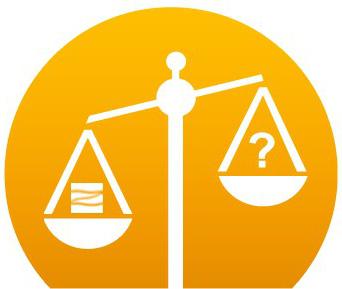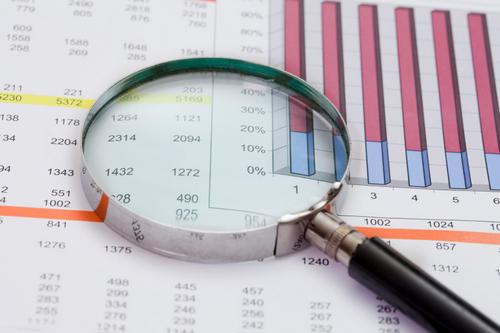What is a business balance sheet?
The concept of "balance" is used in economic, accounting. It reflects interval indicators that characterize the sources of formation of certain resources, as well as the directions in which they are applied. Let's take a closer look at what balance is.
Terminology
For a better understanding of what balance is, one should refer to the direct meaning of this word. It has Latin roots. The word "balance" comes from the words bis, which means "twice" and lanx, which means the scales. Thus, in literal translation, the term means "two-handed". This word is used as a symbol of equality, balance.
general characteristics
In explaining what a balance is, one should pay attention to the method that is used to build it. The complex of available data is entered into a two-sided table. This method is widely used in economic analysis, accounting and planning. In the system of planned balances there are labor, monetary and material. With their help, the formation and subsequent distribution of certain types of raw materials, goods, finances, as well as working reserves are predicted.

What is a balance sheet?
This term in financial accounting has two meanings. In accordance with the first, balance should be understood as equality of results. In this case, the results for credit and debit entries, analytical, synthetic accounts are equal. According to the second value, the balance acts as one of the most important. It reflects the state of the company's funds, expressed in monetary terms, on a specific date. So what is a balance sheet? This is a system of momentary indicators, the value of which is so great that it is often singled out as a separate reporting unit. As additions to the balance, there are various forms of accounting. reporting. Their task is to decipher the information. Speaking about what the balance of the enterprise is, it should be said that this is the form in which all the funds of the company are reflected.
Document structure
The balance sheet contains an asset and a liability. These are two equal parts. One of them shows the composition of funds, the second - the sources of their formation. What is a balance sheet asset? This concept also comes from the Latin word. In translation, it means "acting", "active". Accordingly, balance? This is the inactive, "passive" part. The most important feature of the balance sheet is the equality of the results of liabilities and assets, since these elements reflect the same thing, only from different angles. The latter shows the composition, and the first shows the sources of funds. Each element present in one or another part is called a balance sheet. They, in turn, are grouped into sections. Each line of the balance sheet has a serial number. This makes it easier to find her.

Fill Features
Experts recommend drawing up several forms of balance for different categories of stakeholders. The law does not regulate the reporting structure. However, there are certain standards and rules. They prescribe only the list and economic content for specific articles. The degree of detail of the balance sheet is directly determined by the accountant of the company. Today in Russia there is a tendency to simplify the structure of the document. So, over the past 30 years, the number of items in the balance sheet has been halved.
Sources of information
As a rule, their name coincides with the name of the accounting object. There are two parts to any account: debit and credit. This division is due to the movement of funds - a decrease or increase. Each accounting account has an initial balance - a balance for a particular object, and subsequently its decrease or increase. Thus, at any time you can set the closing balance. To do this, the amount of increase is added to the original balance, and the amount of decrease is subtracted from the resulting balance.

Account classification
The elements on which economic assets are taken into account are divided into 3 groups. The first is active accounts. They reflect the types of households. funds. Explaining what the assets of the balance sheet are, it should be said that the balance of such accounts can only be debit. This is due to the fact that the reduction of funds is limited by their size. The second group is passive accounts. They keep records of the sources of the formation of households. funds. Their balance can only be credit. The third group is active-passive accounts. They keep records of both types and sources of funds. This group includes accounts for settlements with legal entities. The latter can act as debtors or creditors. In the first case, the accounts will have an active structure.
Sub-accounts
These are intermediate links between analytical and synthetic accounts. With the help of sub-accounts, the corresponding indicators are grouped. In particular, the data of analytical accounts are used to obtain additional information about registered objects.
Classification of balance sheets
The division is carried out according to the following criteria:

In accordance with the time of compilation, balances are distinguished:
- Current.
- Introductory.
- liquidation.
- Unifying.
- Dividing.
In accordance with the sources, the balances are divided:
- General.
- Inventory.
- Book.
Depending on the amount of information, the balance can be consolidated or single. According to the nature of the activity, documentation is divided into main and non-main types. In accordance with the form of ownership, there are balance sheets of cooperative, state, private, joint, public and mixed organizations. Their difference lies in the source of the formation of funds. Depending on the objects of reflection, separate and independent balance sheets are distinguished. According to the cleaning method, gross and net documents are distinguished. An alternative balance sheet is also used in accounting. This form is used to obtain evidence of the completeness and reality of the reflection of the products produced, services rendered or work performed. So what is the alternative balance? This is the method by which the materials used for the manufacture of a unit of goods and the actual output of products are shown in accounting.
Categories by time of compilation
At the time of the establishment of the company, introductory documentation is drawn up. What is the current balance is clear from the name itself. These summary tables are compiled over the entire period of the organization's activities. In turn, the current balance is divided into initial, intermediate and final. Liquidation documentation is drawn up upon termination of activity. When a large company is divided or one or more divisions are transferred to another company, a separation balance sheet is formed. When merging, the corresponding documentation is compiled.

Important point
Before it will be drawn up, a balance sheet reformation must be carried out. What it is? This is a procedure in which the distribution of profits during the year or the write-off of a loss is carried out. The new financial period will start as if from scratch. Thus, on December 31 of the reporting year, the balance sheet is reformed. What is it for a beginner? This is a zeroing of the balance of accounts. In this case, you should close the account. "Sales" (90), "Other expenses and income" (91), and "Losses and gains" (99).
Compilation sources
Drawing up inventory balances is carried out only on the basis of the inventory of funds. Such accounting is necessary when a new company appears on the property base that existed before or in the event of a change in the economic form of the company. The book balance is formed in accordance with the entries from the Books. In this case, the information does not pass a preliminary check through the inventory. For the general balance, inventory data and accounts are used.
Amount of information
The unit balance reflects the activities of one enterprise. To obtain summary documentation, sums are added up that are listed on the articles of several single tables. At the same time, the total results are calculated. In such documentation, the state of funds for certain organizations is reflected in separate columns. The "Total" line shows the total for the entire company.

Other categories
The main activity is the direction that corresponds to the course and charter of the company. All other activities are considered non-essential. In the departments that deal with it, a separate balance sheet can be maintained. Depending on the cancellation method, gross and net balances are distinguished. The first includes regulatory articles. They are those in which, when forming the actual cost of funds, the amounts are deducted from the value of one or another article. Regulatory directions are excluded from the net balance sheet. This procedure is referred to as "clearing".
Detailing indicators
To obtain more specific information, synthetic and analytical accounts are used. The first reflect the generalized values that characterize the economic means. Analytical accounts use more detailed characteristics of accounting objects. They detail information obtained from synthetic articles. Analytical accounts reflecting inventory values contain not only monetary indicators, but also natural ones. Both of these groups show the same facts of the company's economic activity. In this regard, the totals for the records on both analytical and on should be the same.
Finally
Thus, given the above information, it becomes clear what balance is. Beginners should carefully refer to the procedure for its preparation. Entering data into pivot tables is a very painstaking job. Errors in the preparation of the balance sheet can significantly affect the bottom line.




